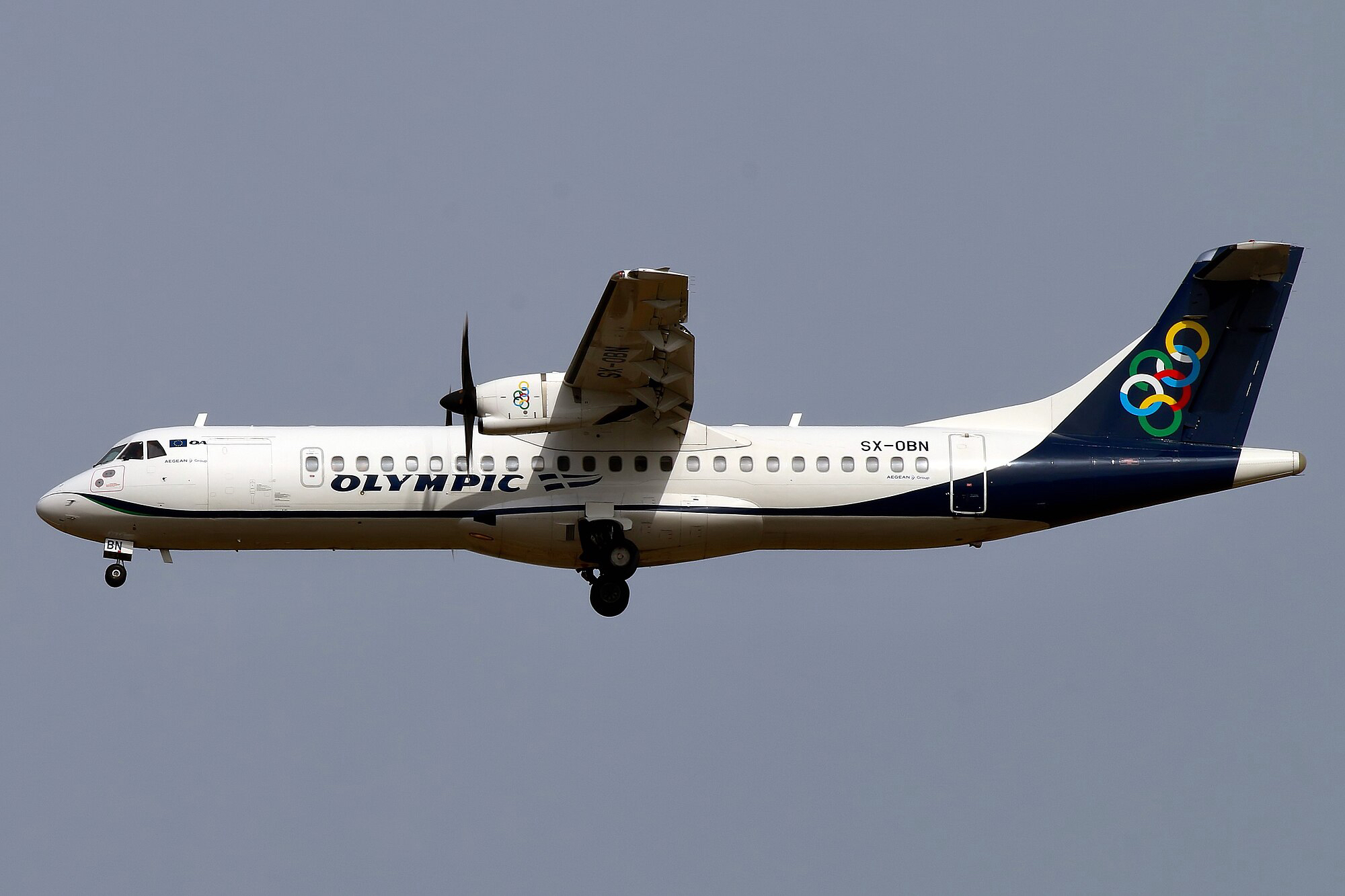Flight OA-250/A3-250 | Registration: SX-OBT
Date: 1 April 2025 | Location: Mytilene International Airport (LGMT), Greece
—
Introduction
On 1 April 2025, an Olympic Air ATR-72-212A, registration SX-OBT, operating domestic flight OA-250/A3-250 from Athens Eleftherios Venizelos International Airport (LGAV) to Mytilene International Airport (LGMT), reported an engine fire indication moments after landing on runway 14. The aircraft came to a complete stop on the runway and an emergency evacuation was promptly initiated.
All 59 passengers and 4 crew members safely evacuated the aircraft using the emergency exits. No injuries were reported. The indication was later determined to be false.
—
Aircraft and Flight Information
• Aircraft Type: ATR-72-212A
• Operator: Olympic Air (Aegean Group)
• Registration: SX-OBT
• Engines: 2 × Pratt & Whitney PW127F
• Flight Number: OA-250 / A3-250
• Origin: Athens (LGAV)
• Destination: Mytilene (LGMT)
• Date: 1 April 2025
• Occupants: 63 (59 passengers + 4 crew)
• Phase of Flight: Landing (Rollout)
• Runway Used: 14
• Weather Conditions: Visual Meteorological Conditions (VMC), mild winds, no significant weather reported
—
Sequence of Events
Touchdown and Alert
Upon landing on runway 14 at Mytilene, the crew received a master warning indicating a possible engine fire. As per standard emergency protocol, the aircraft was brought to a full stop on the runway.
Evacuation
Believing the warning to be genuine, the crew commanded an immediate evacuation using the forward and rear passenger doors. All passengers evacuated safely onto the runway surface under the guidance of the cabin crew. Airport fire and rescue services responded and stood by as a precaution.
Follow-Up Actions
After the passengers were evacuated and no external signs of fire were observed, maintenance teams and fire crews conducted a visual inspection. The aircraft was later taxied to the apron under its own power by the flight crew.
The incident was reported to the Hellenic Civil Aviation Authority (HCAA) and an internal investigation was initiated.
—
Airline and Maintenance Response
Olympic Air released a statement confirming that the flight crew received an engine fire warning after landing and carried out the appropriate emergency actions. Upon inspection, no signs of fire or damage were detected.
Maintenance teams later determined that the fire indication was due to a faulty sensor or alerting component within the engine monitoring system. The aircraft was withdrawn from service for further diagnostics and parts replacement.
A replacement Airbus A320-200, registration SX-DVQ, was dispatched to Mytilene to operate the return leg (OA-251/A3-251) back to Athens. That flight departed with a delay of approximately 2.5 hours.
—
Safety and Operational Considerations
The ATR-72 is equipped with dual engine fire detection systems that monitor nacelle temperature via loop sensors. False positives can occur due to sensor faults, wiring issues, or environmental conditions. While the alert was ultimately determined to be erroneous, the crew’s decision to initiate an evacuation was deemed appropriate given the warning severity and potential risk.
This incident reinforces the importance of swift and decisive action during potential fire events, particularly during high-risk phases such as landing rollout.
—
Conclusion
Although the engine fire warning was false, the incident highlights the robustness of Olympic Air’s crew training and emergency preparedness. The aircraft was safely stopped, the evacuation was executed without injuries, and the issue was promptly addressed by maintenance personnel. No damage occurred to the aircraft, and service was resumed following a full technical inspection.
—
Disclaimer
This article is based on publicly available information and reports at the time of writing. While every effort has been made to ensure accuracy, we cannot guarantee the completeness of the information provided. If you are the rightful owner of the photo or content and wish it to be taken down, please email takedown@cockpitking.com.
